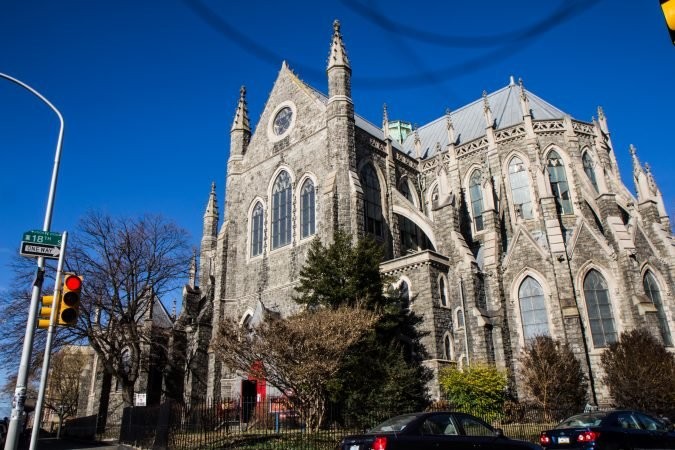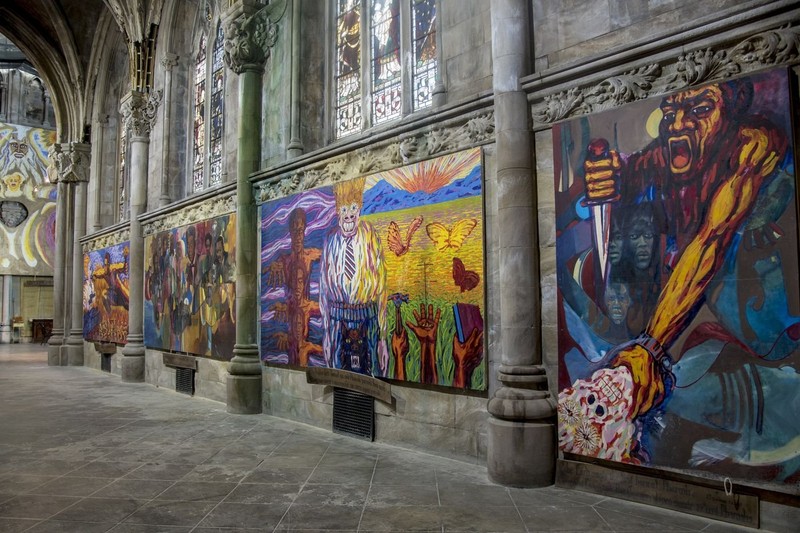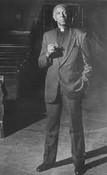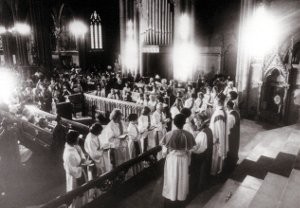Church of the Advocate
Introduction
Text-to-speech Audio
Images
The Church of the Advocate

Murals inside the church

Father Paul Washington

Ordination of the Philadelphia Eleven

Backstory and Context
Text-to-speech Audio
Following the death of successful merchant and Philadelphia County treasurer George W. Smith, his wife commissioned a church in his memory in the single largest act of religious philanthropy in the city's history. The church, designed by Charles M. Burns, was built in the French Gothic style, complete with flying buttresses and large stained glass windows. It took seven years to build—from 1890 to 1897.
From its inception, the Episcopal church was committed to serving its parish and to making no distinction between rich and poor. Accordingly, the Church of the Advocate ended the old practice of renting pews, which it believed made the church accessible to all.
When the church was built, its North Philadelphia neighborhood was largely made up of working-class, white people. Over the years, however, the demographics of the area changed and the Church of the Advocate adapted. As the area became predominantly African American, the church made noteworthy efforts to be more representative of its neighborhood, particularly under the leadership of Father Paul M. Washington. In the 1970s, Washington commissioned a series of fourteen murals in the nave depicting African American history. Underneath each mural is a passage from scripture that likens the struggle of African Americans to that of the ancient Hebrews. The murals remain one of the church's most striking features.
In the 1960s and 1970s, the church also took a an active role in the civil rights movement. It welcomed civil rights groups that were not welcome in other venues and hosted the Third Annual Conference on Black Power in 1968. Two years later, the church hosted the Black Panther Convention.
The Church of the Advocate was also ahead of its time regarding the ordination of women as priests in the Episcopal Church. Eleven women (known as the Philadelphia Eleven) were ordained in the church in 1974, two years before the national church voted to approve women as Episcopal priests. The church is considered the first site in the country to ordain women as priests.
Continuing in the Episcopal Church's tradition of social justice as well as the activist model established by Father Washington, the Church of the Advocate continues to actively serve its community. The church provides free lunches every weekday at the Advocate Cafe. The Advocate Center for Culture and Education offers numerous classes and workshops.
The Church of the Advocate is a National Historic Landmark and is listed on the National Register of Historic Places, as well as the Pennsylvania Inventory of Historic Places and King's Handbook of Episcopalian Churches.
Sources
Church of the Advocate. NP Gallery. . Accessed February 07, 2019. https://npgallery.nps.gov/NRHP/GetAsset/96ba90aa-013e-4fd0-9883-98f882779508.
